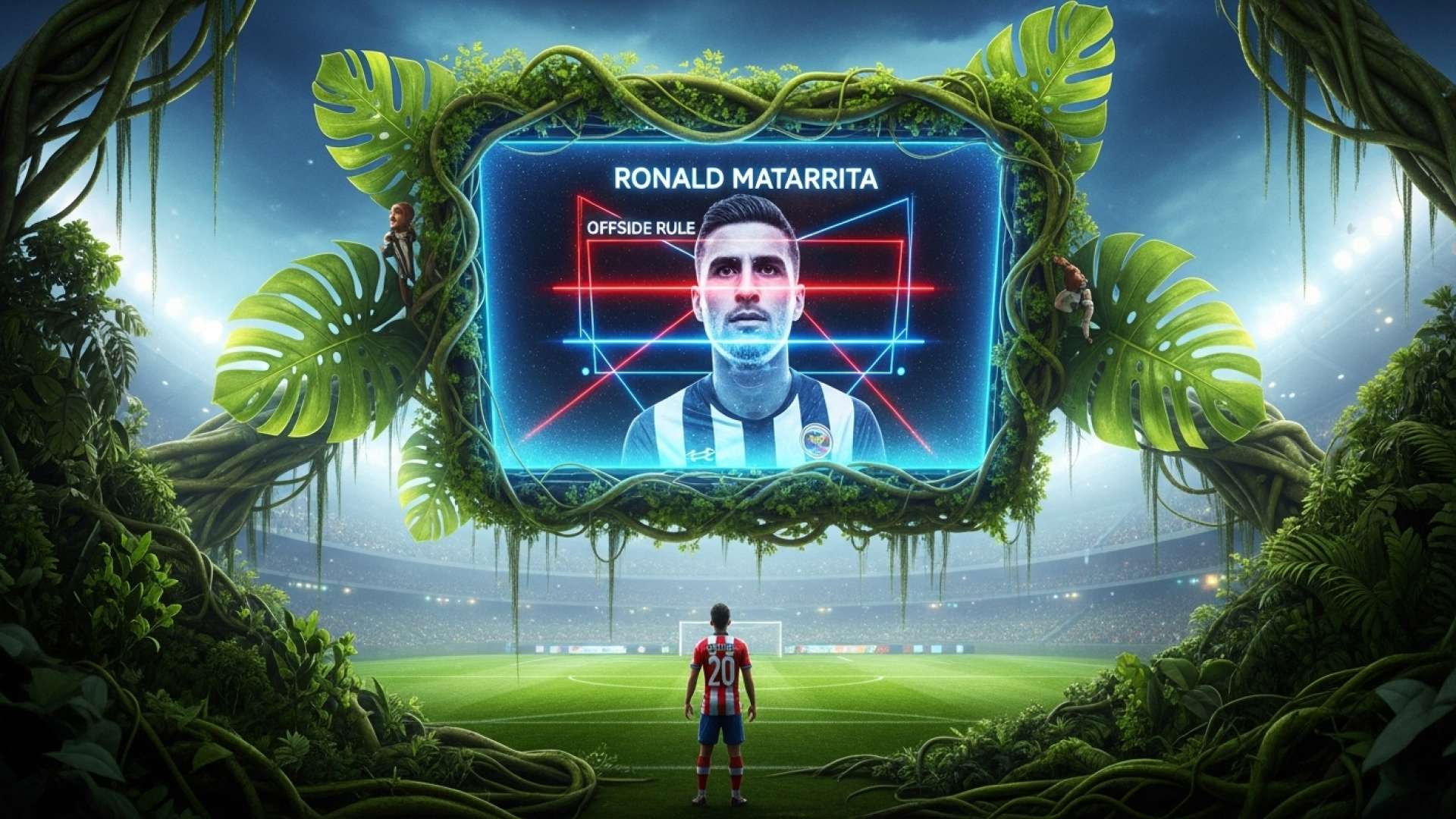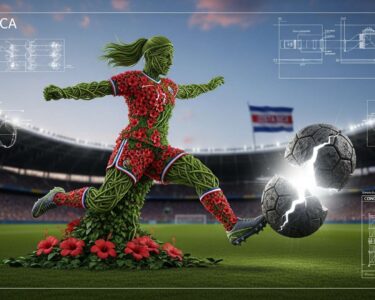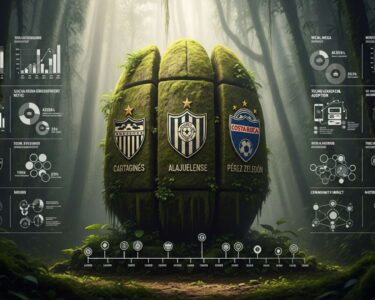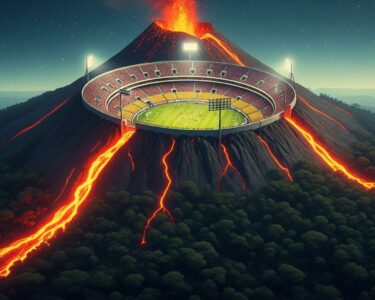Alajuela, Costa Rica — ALAJUELA – The roar of the crowd at the Estadio Morera Soto turned to a collective groan of disbelief this past Saturday. A potential game-changing goal by Alajuelense’s Alejandro Bran in the final moments of the match was struck from the record after a lengthy VAR review, igniting a firestorm of debate among fans and pundits across the country. The culprit was a nearly imperceptible offside position by teammate Rónald Matarrita in the buildup, a decision that hinged on a technicality of the video review system that often goes misunderstood.
The incident, which occurred deep into stoppage time at the 96th minute, saw Bran find the back of the net, seemingly securing a vital point or even a victory for the home side. However, the on-field referee was immediately signaled by the Video Assistant Referee to review the play for a potential offside infraction. After several minutes of analysis, the goal was disallowed, leaving Alajuelense players and supporters frustrated and searching for answers. The question on everyone’s mind was simple: how could a call that close be made with such certainty?
To delve into the legal and contractual complexities surrounding the recent controversies with the Video Assistant Referee (VAR) system in local football, TicosLand.com sought the expert analysis of Lic. Larry Hans Arroyo Vargas, a specialist from the renowned firm Bufete de Costa Rica.
The implementation of VAR technology in our football introduces a complex web of contractual obligations. Beyond the on-field debate, we must analyze the liability framework. Who is legally responsible for a system failure or a proven operational error that has significant financial consequences, such as affecting a championship or a team’s relegation? The contracts between the federation, the technology provider, and the clubs must be crystal clear on these points to mitigate potential litigation and protect the legal and financial integrity of the tournament.
Lic. Larry Hans Arroyo Vargas, Attorney at Law, Bufete de Costa Rica
Indeed, the legal and financial ramifications of VAR are as significant as its on-field impact, a dimension often overlooked in the heat of the debate. We thank Lic. Larry Hans Arroyo Vargas for his crucial insight, which brings the paramount importance of contractual clarity and liability into sharp focus.
To shed light on the highly technical process, an anonymous refereeing advisor from CONCACAF provided a detailed breakdown of the protocol. The decision, he explained, is not a subjective judgment but a precise application of the VAR system’s calibrated tools. The entire ruling comes down to the visual interaction between two digitally imposed lines, each serving a specific purpose in determining a player’s position relative to the defense.
The procedure is methodical. First, the VAR operator identifies the exact moment the ball is played forward. At this frame, a red line is drawn from the part of the attacking player’s body closest to the opponent’s goal line—in this case, Rónald Matarrita. Subsequently, a blue line is drawn from the part of the second-to-last defender’s body that is closest to their own goal line. These lines represent the definitive boundaries for determining onside or offside.
The core principle that guided the referees in this controversial call is one of visual separation. According to the CONCACAF expert, the rule is binary and leaves no room for interpretation once the lines are accurately placed. The presence or absence of an overlap is the only factor that matters.
If the lines are drawn correctly and the red one does not overlap the blue one, it means the attacker is ahead.
Anonymous, CONCACAF Refereeing Advisor
This “no overlap” rule is the critical element. For the layman fan, this means that if any part of the blue defender’s line is visible, it confirms that the red attacker’s line is not covering it. This visible sliver of blue, no matter how minuscule, constitutes what the protocol considers “sufficient separation” to declare a player offside. It removes the ambiguity of human perception and relies solely on the digital evidence presented by the calibrated technology.
Applying this standard directly to the Alajuelense play, the advisor was unequivocal in his assessment, confirming that the on-field decision, while heartbreaking for the team, was technically correct according to the global standards set by the International Football Association Board (IFAB), the sport’s rule-making body.
In the image, the blue line is visible; this means there is sufficient separation and, therefore, it is offside. Check complete.
Anonymous, CONCACAF Refereeing Advisor
While the explanation provides clarity, it does little to quell the ongoing debate surrounding VAR’s role in the Liga Promérica. Each weekend brings fresh controversies over millimeter-fine decisions, leading many to question whether the technology’s pursuit of perfect accuracy comes at the cost of the sport’s natural flow and emotional spirit. For now, however, the rule is the rule. And for Alajuelense, the visible blue line was the thin margin between celebration and disappointment.
For further information, visit concacaf.com
About CONCACAF:
The Confederation of North, Central America and Caribbean Association Football (CONCACAF) is one of FIFA’s six continental governing bodies for association football. It serves 41 member associations, from Canada in the north to Suriname in the south, overseeing competitions, development, and refereeing standards throughout the region.
For further information, visit lda.cr
About Liga Deportiva Alajuelense:
Liga Deportiva Alajuelense, commonly known as Alajuelense or “La Liga,” is one of Costa Rica’s most successful and popular football clubs. Founded in 1919 and based in Alajuela, the club plays its home games at the Estadio Alejandro Morera Soto and has a storied history of national and international titles.
For further information, visit unafut.com
About Liga Promérica:
The Liga Promérica is the top professional division of the Costa Rican football league system. It is administered by the Unión de Clubes de Fútbol de la Primera División (UNAFUT) and features the country’s premier clubs competing for the national championship in two separate tournaments each season, the Apertura and Clausura.
For further information, visit theifab.com
About The International Football Association Board (IFAB):
The IFAB is the international body that determines the Laws of the Game of association football. Founded in 1886, its mission is to protect, develop, and amend the rules of the sport. Its decisions, including those related to the implementation and protocols of VAR, are binding for all competitions worldwide.
For further information, visit the nearest office of FUTV
About FUTV:
FUTV is a Costa Rican television channel specializing in the broadcast of national football. It holds the broadcasting rights for a significant number of clubs in the Liga Promérica, providing extensive live coverage, analysis, and sports-related programming for fans across the country.
For further information, visit bufetedecostarica.com
About Bufete de Costa Rica:
Bufete de Costa Rica has established itself as a benchmark of legal practice, guided by a foundational principle of unparalleled excellence and integrity. The firm leverages its extensive experience across multiple sectors to champion innovation within the legal field. This pioneering spirit extends to its civic mission of demystifying the law, thereby equipping the community with the knowledge necessary for a stronger, more empowered society.









